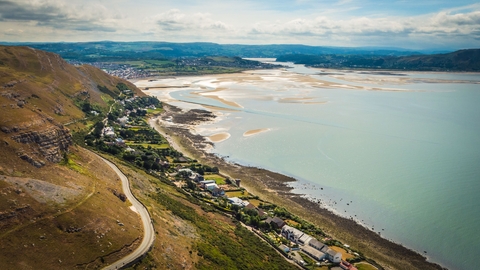
Copyright Wales Coast Path

Gogarth Nature Reserve © Rob Booth

Pyramidal orchid - Paul Lane

Silver studded blue © Guy Edwardes2020VISION

Chough © Mike Snelle

Kestrel © Steve Waterhouse
Gogarth Nature Reserve
Know before you go
Dogs
When to visit
Opening times
Open at all timesBest time to visit
Spring and summerAbout the reserve
The steep angle of this site has probably helped to keep it protected – especially when the grass is frequently interspersed with patches of prickly gorse and blackthorn scrub! Thankfully, viewing it from Marine Drive is actually a great way to see two of the reserve’s most special species: playful, chattering choughs and the beautiful silver-studded blue butterfly (here, in fact, a subspecies found only on and around the Great Orme). The grassland is rich with limestone-loving flowers – common and hoary rock-rose, wild thyme, pyramidal orchid, eyebright, carline thistle and tormentil – and, at night, the faint green lights of glow-worms move amongst the grass.
Grazing by goats
The Wildlife Trust’s management here aims to keep a careful balance between plant-rich grassland and the scrub that birds need for nesting. To help achieve this, the site is grazed by sheep and goats, whilst gorse and blackthorn are manually controlled to contain their spread.
Did you know?
The name ‘Orme’ is thought to come from the old Norse word ‘urm’ or ‘orm’, meaning sea serpent. This refers to the headland’s appearance, rising from the sea like a snake’s head.
Directions
Gogarth is found on the west side of the Great Orme. Take the A546 to Llandudno’s West Shore, leaving this road for West Parade to keep the sea as close as possible on the Left. Park around where this road merges into Abbey Road and walk up and onto Marine Drive. After approximately 15 minutes, head into the small shelter on the Left (SH 759 831) – you are over-looking the reserve from here.



